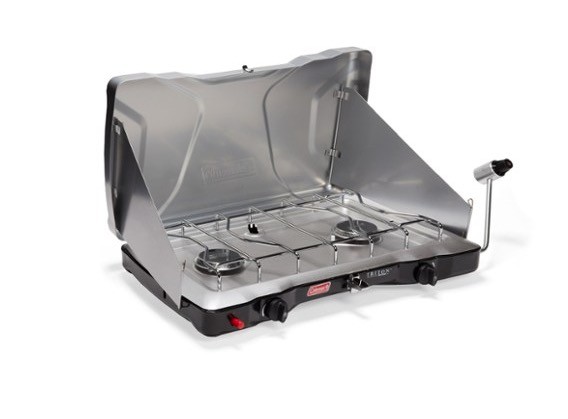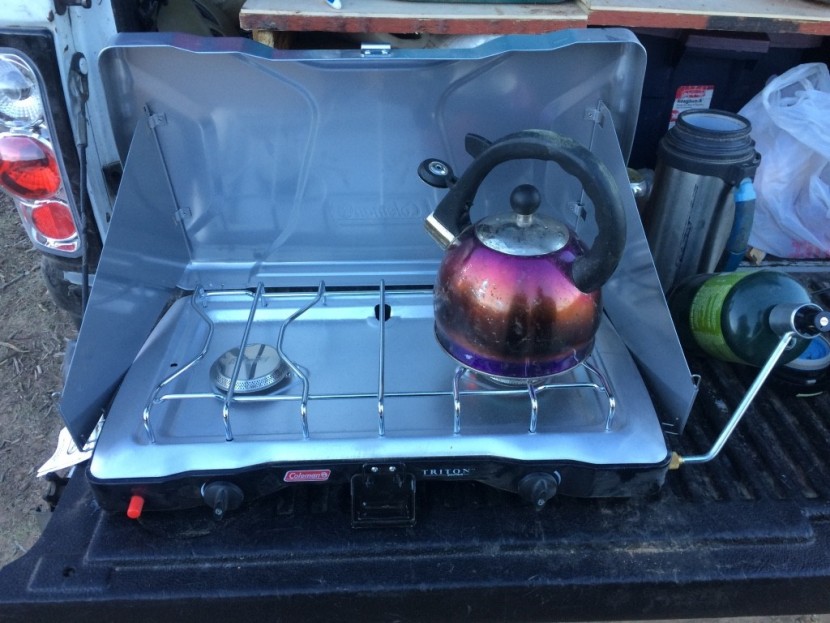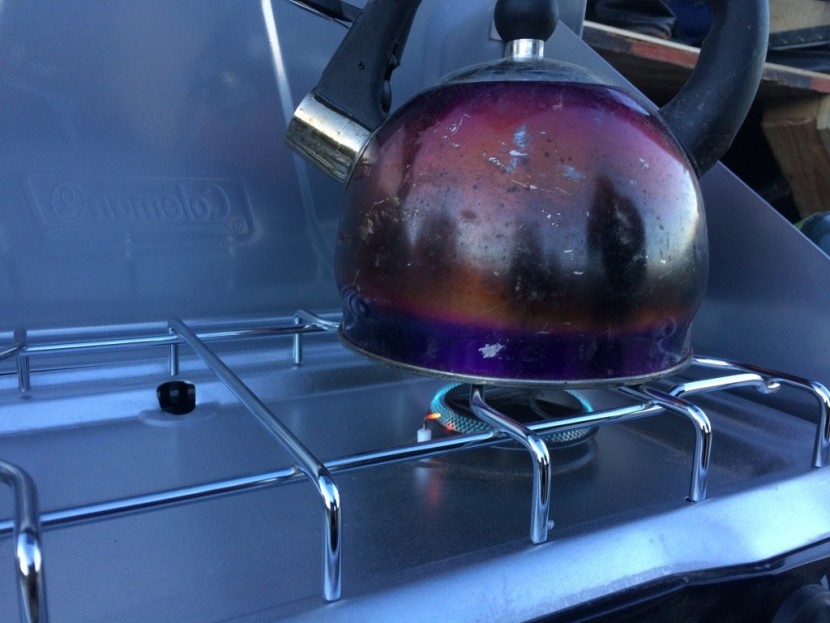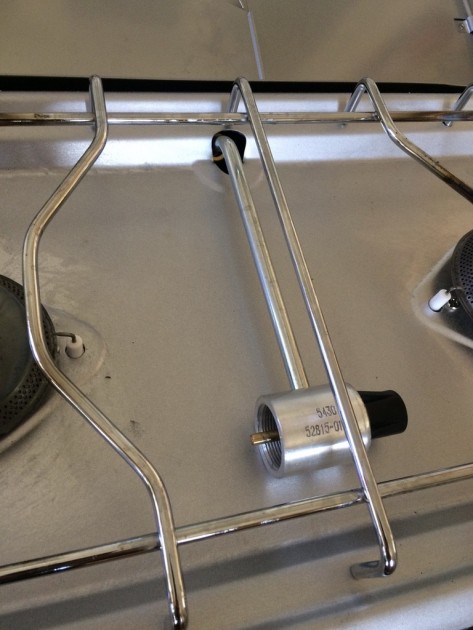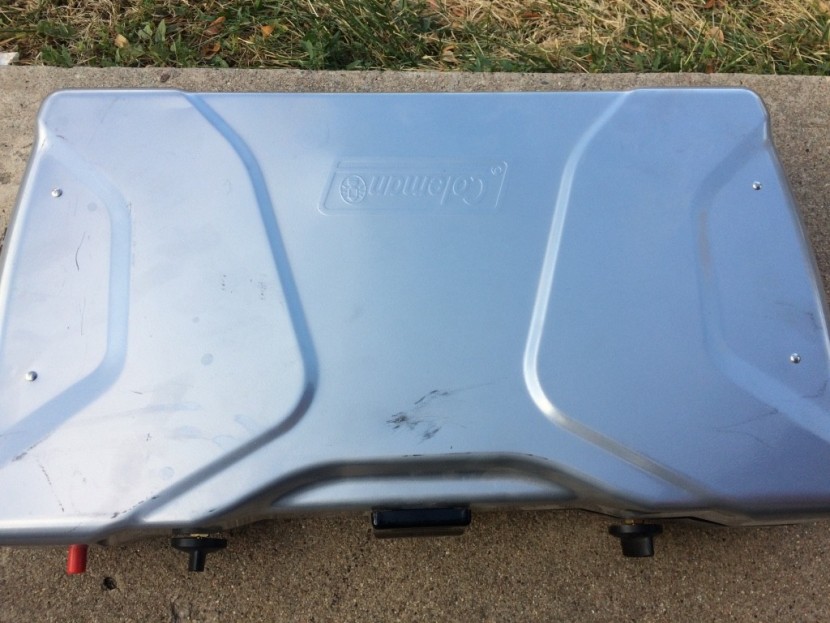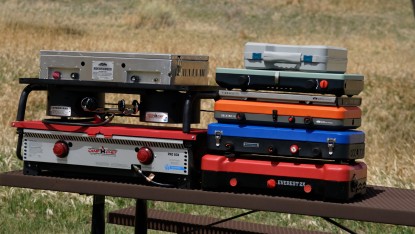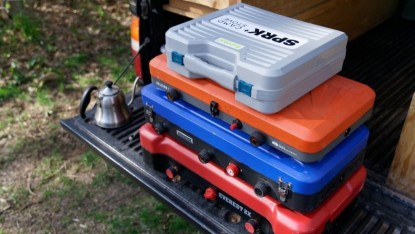Coleman Triton Plus Review
Our Verdict
Our Analysis and Test Results
The Triton Plus is not as fancy or powerful as many of the other stoves we tested. Still, it gets the job done, and we genuinely enjoyed the cooking experience it provided.
Time to Boil
The Triton boiled a quart of water in 4:45, which is a pretty decent time considering it only has 11,000 BTUs per burner. However, on a breezier day with cooler water, this same task took 9:15. This is a larger time difference than we saw with almost any other stove, even models without a windscreen and with lower BTUs. If boiling water is an important aspect of your camp kitchen experience, you may want to purchase a different stove or get a JetBoil Flash as a companion accessory.
Wind Resistance
This is the place where the Triton struggles the most. With only 11,000 BTUs per burner, we expected some loss in performance under less-than-ideal circumstances, but perhaps not to the extent we saw. During our box fan test, where we set up a large fan 24 inches to the side of each stove and timed the boiling of a quart of water, the Triton finished with one of the slowest times at 15 minutes. Again, for your sleepy-eyed campmates that need coffee ASAP in the mornings, you may want to also have a JetBoil on hand — it'll save you time and fuel for sure.
Simmering Ability
The Triton simmers quite well once you get the hang of it. The flame is a bit hard to see when it's turned down very low, so some attention is required to avoid accidentally turning it off. On top of that, the burner knob's full range is several full 360-degree rotations, but to turn it from low to off is only about a quarter turn. And despite the low BTUs on this stove, it does seem to cook quite fast, so, again, some attention is required to find the right setting when you want to simmer. However, once you learn the nuances of the burner, there is no problem with performance, and cooking low and slow is no problem.
Ease of Set Up
This stove sets up just like any other compact tabletop model, with only a slight variation in the design of the windscreen. The wings slot into the side of the stove body in a way that allows you to change their angle — helpful if you have an oversize pan that needs just a little more space. A small recess in the drip tray gives the propane adaptor a place to nest into so that it doesn't slide around inside the stove as much. The adaptor also screws into the stove body much more easily than with several of the other models we tested. All in all, it's a straightforward experience with no quirks or annoyances.
Ease of Care
Another simple and straightforward process. The cooking grate lifts out, exposing an easy-to-clean steel drip tray. The recess for the propane adaptor will undoubtedly collect food bits over time, but nothing substantial unless you have some enormous spillover. We did notice after taking the Triton out for testing that it seemed to get beat up and dented faster than our other competitors, but not in any way that made us doubt the overall product integrity or performance.
Portability
The Triton packs down to 21 x 12.5 x 4.5 inches. This is a couple of inches smaller than many of our other compact tabletop models, but, depending on your setup, probably isn't worth the smaller burners or lower BTUs.
Value
This is fairly priced for a solid camp stove. However, when you look at the fact that you can get other stoves with more BTUs and cooktop space for just a bit more, then it makes less sense to choose this one. That being said, if you end up owning this stove, we don't think you'll be disappointed.
Conclusion
The Triton Plus is a solid stove at a reasonable price. It simmers well, sets up and ignites with ease, and is simple to care for. As a stand-alone stove, it's fine, but when stacked up against some of the other stoves we tested, it fell a bit short. It has low BTUs, a smaller cooking area, and struggles with the wind. All-in-all it's a decent stove, but not our first choice.


